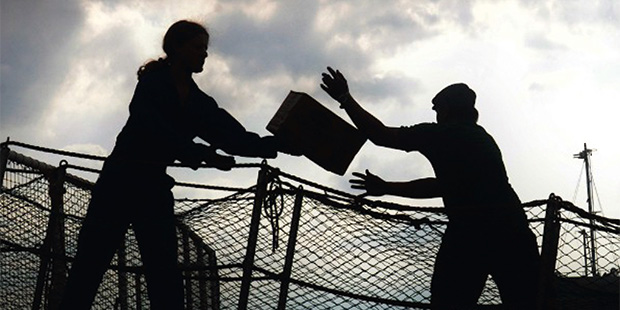
RECOVERING FROM PABLO. Aside from rebuilding properties, survivors of typhoon Pablo are also battling the trauma brought by the fatal disaster. Photo from greenpeaceblogs.org.
IN SOME parts of Mindanao, a typhoon is rare thing.
This fact might be helpful, perhaps, in understanding how Typhoon Pablo’s calamitous effects were so extensive—nobody really expected the degree of damage it would wreak.
Months after the monster typhoon, the people in the region are still reeling from their losses. Pablo hit the provinces that have not seen typhoons reach their parts for years: on December 4, 2012, the typhoon made landfall over Baganga, Davao Oriental, and traversed Compostela Valley and Bukidnon before reaching south of Dumaguete City and Northern Palawan.
According to the National Disaster Risk Reduction and Management Council, the death toll reached 1,067, while 2,666 were injured as a result of the typhoon. Moreover, the total damage was approximated to have reached P37 billion, the agriculture sector being the most affected.
The tragedy has left many in Mindanao asking questions about their prospects in the event of another disaster in Pablo’s vein.
Coping with a calamity
Several weeks after the typhoon, communities have been trying to rebuild what had been lost. For them, the least they can do is to seek to recover from the trauma brought by the calamity.
The affected communities found support in local government units and non-government organizations. Such was the help of the Ateneo de Davao University (ADDU)’s Center of Psychological Extension and Research Services (Copers), for instance, through the Mental Health and Psychosocial Support (MHPSS) response program.
This program offered services to individuals and families especially in Baganga, Davao Oriental, and New Bataan, Compostela Valley.
ADDU Psychology Instructor Hadji Balajadia talked about Copers’ progress with The GUIDON. Volunteers generally focused on therapeutic services for children. This was done so that the children can return “into normal emotion regulation, restoration of cooperative interaction, and readiness to refocus on more pleasant stimuli.”
Community trainings were also conducted with health workers, nutrition scholars, midwives, Sanggunian ng Kabataan chairpersons and chairmen of the committees on health in certain barangays. The Copers progress report stated that such an effort was aimed at further strengthening support in the affected locales.
Issues with volunteers
Amid the numerous relief efforts undertaken in the wake of Pablo, however, the volunteers still highlighted points for improvement. Copers Director Gail Ilagan, PhD, said that the “MHPSS delivery across the entire area affected by Typhoon Pablo is still problematic.”
Moreover, New Bataan and Davao Oriental have still been facing intermittent weather disturbances. According to the report, these make deployment of volunteers from Davao “an iffy proposition most times.”
At times, volunteers who are not specialists in therapeutic services also cause concerns. Ilagan said that there has been a problematic assumption that “Typhoon Pablo survivors have been traumatized or are suffering from Post Traumatic Stress Disorder.”
“Their interventions are often a repeat of a version of stress debriefing where clients are made to recount and re-experience the disaster event, thereby keeping survivors stuck to the painful event,” Ilagan explained.
Learned preparedness in other areas
Fortunately, other areas in Mindanao were more equipped and informed when Pablo hit the region, minimizing the adverse effects of the calamity.
For communications and technology management sophomore Renz Alinas, who comes from Cagayan de Oro City, “Typhoon Pablo was primarily CDO’s chance to prove that they’ve learned to be prepared for disaster.” His comment came in light of the devastation that the area experienced from Sendong in 2011.
Alinas commended the steps undertaken by the local government. “With improvements in warning systems, relocations and preservation of relief goods, there were zero casualties when Pablo happened. So, indeed, CDO learned.”
Role of the government
Management economics sophomore Venerey Valenzuela, who grew up in Davao City, shared that her relatives thought that necessary actions by the government also aided the city in minimizing damage from Pablo.
“The government, through its local risk reduction councils, was on red alert situation. They already made information dissemination, warnings and preemptive evacuations to affected families in the areas even before the onset of disaster,” Valenzuela said.
She added, “Incident command posts in areas affected were activated. Every agency involved was ordered to stand by and made sure that they have available resources for retrieval and relief operations.”
As the provinces in Mindanao recover from the destruction brought about by Pablo, the people and the local government continue to learn. The lessons they have taken from the calamity now compel them to improve their disaster prevention measures.



